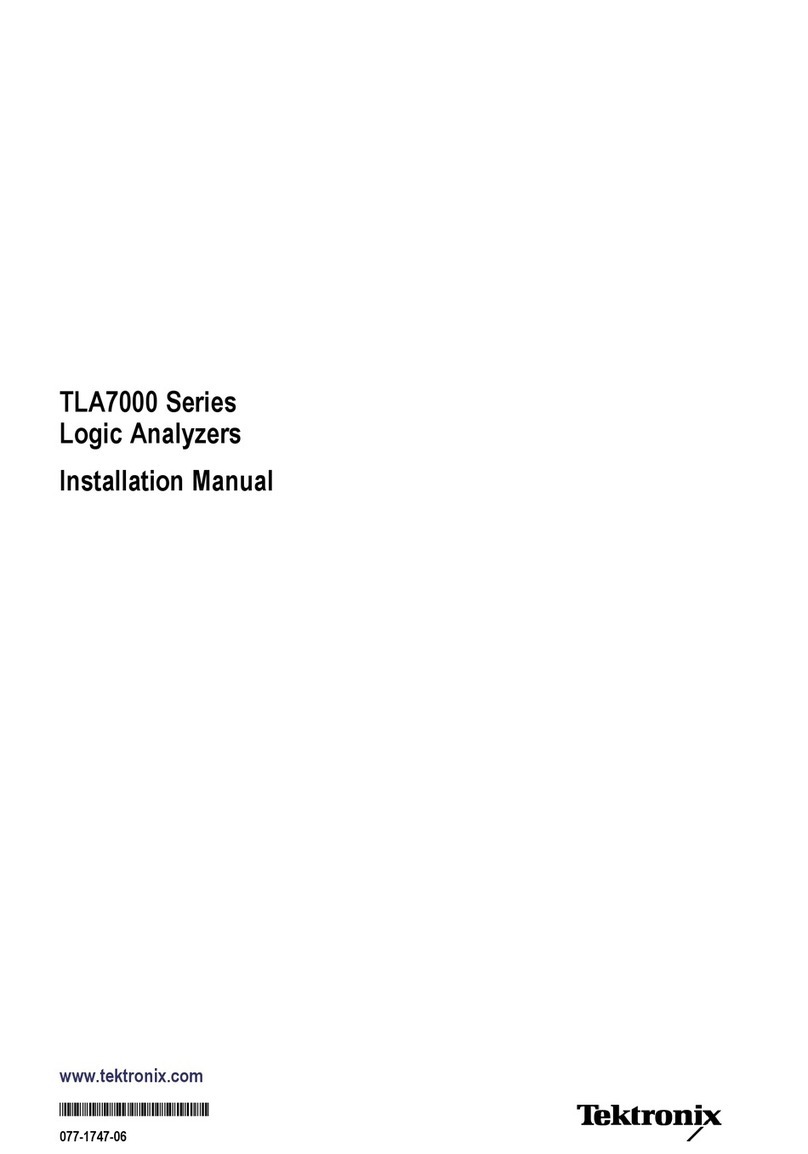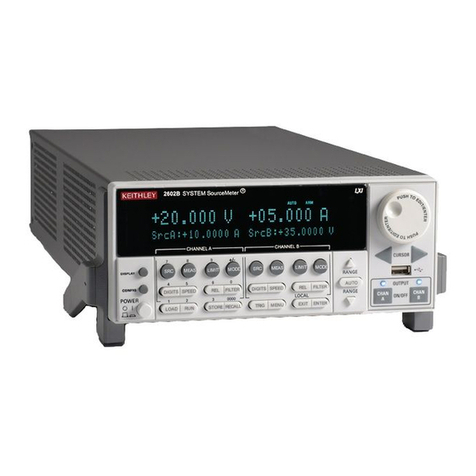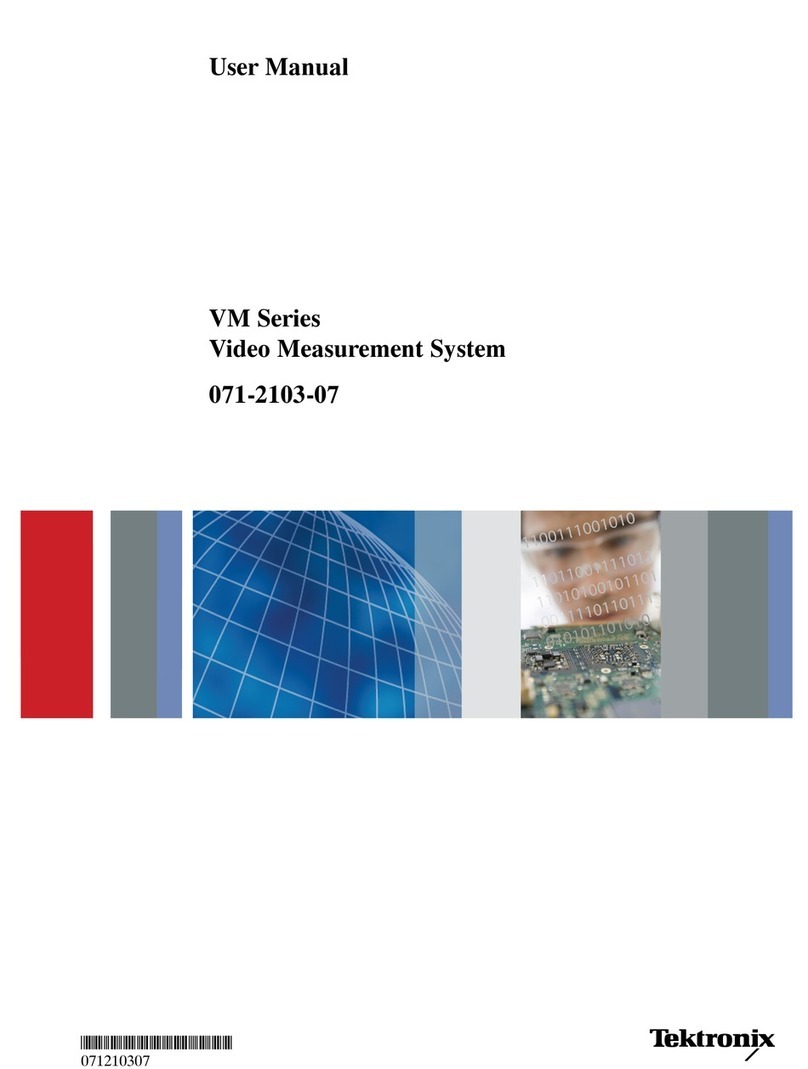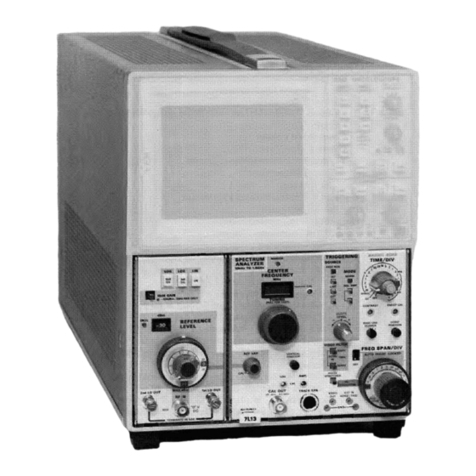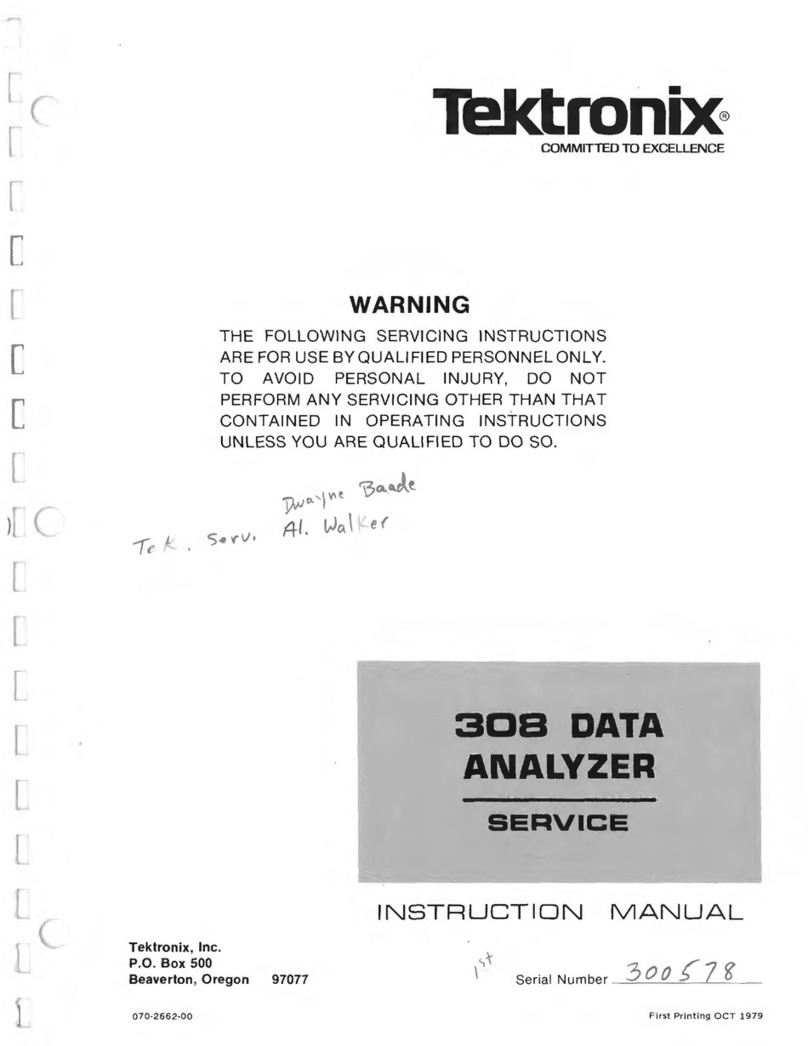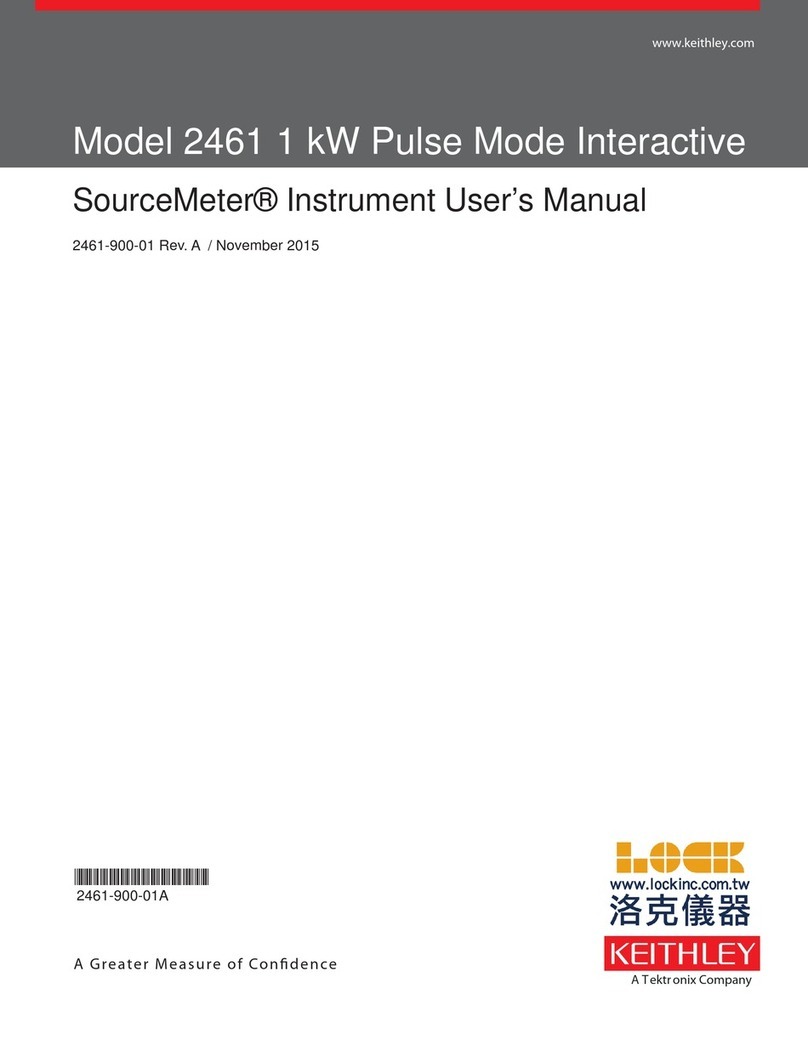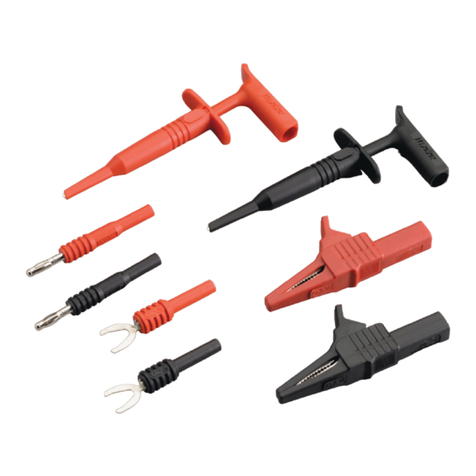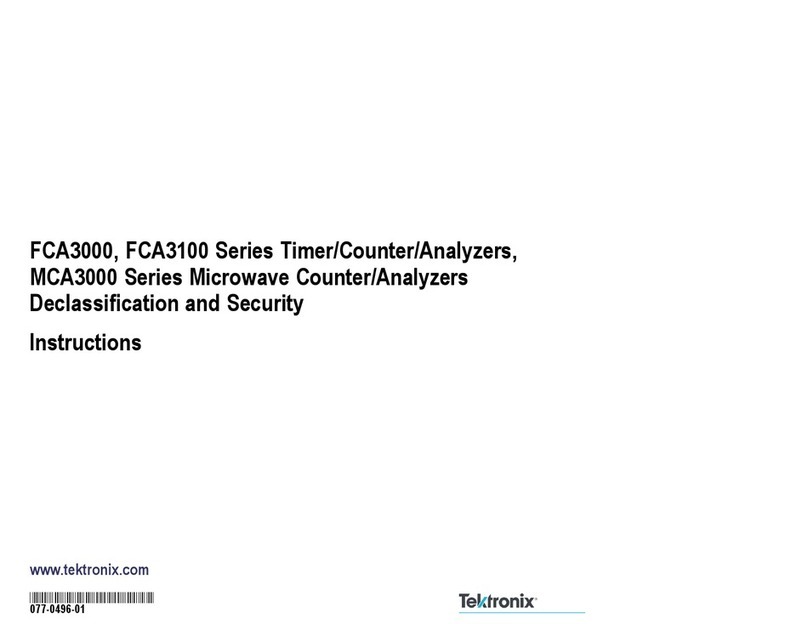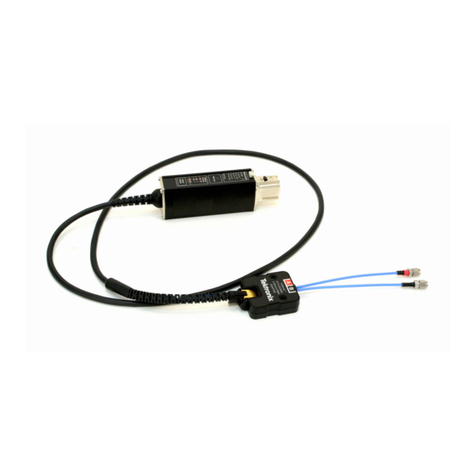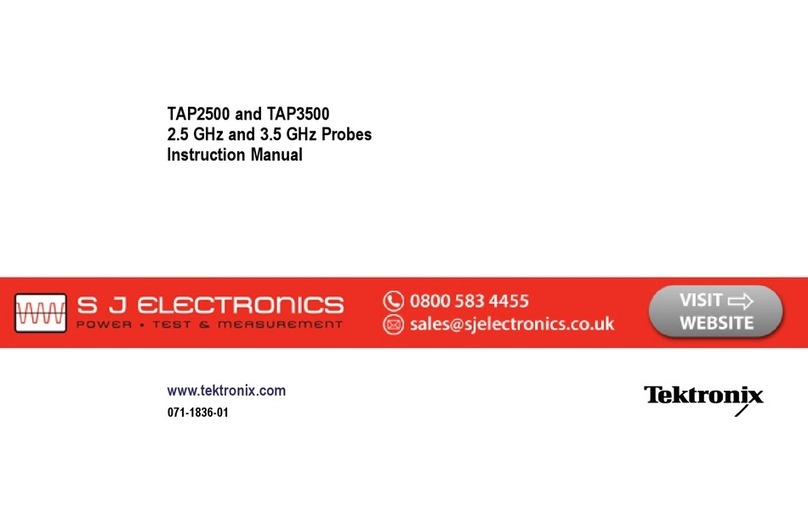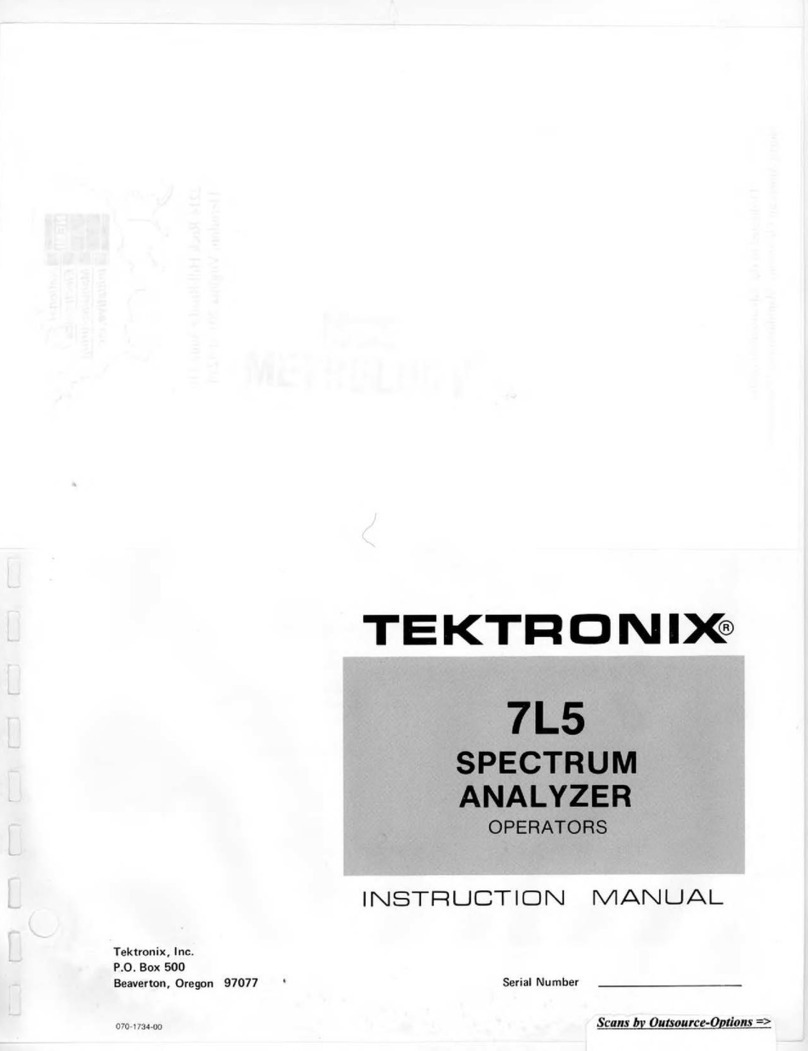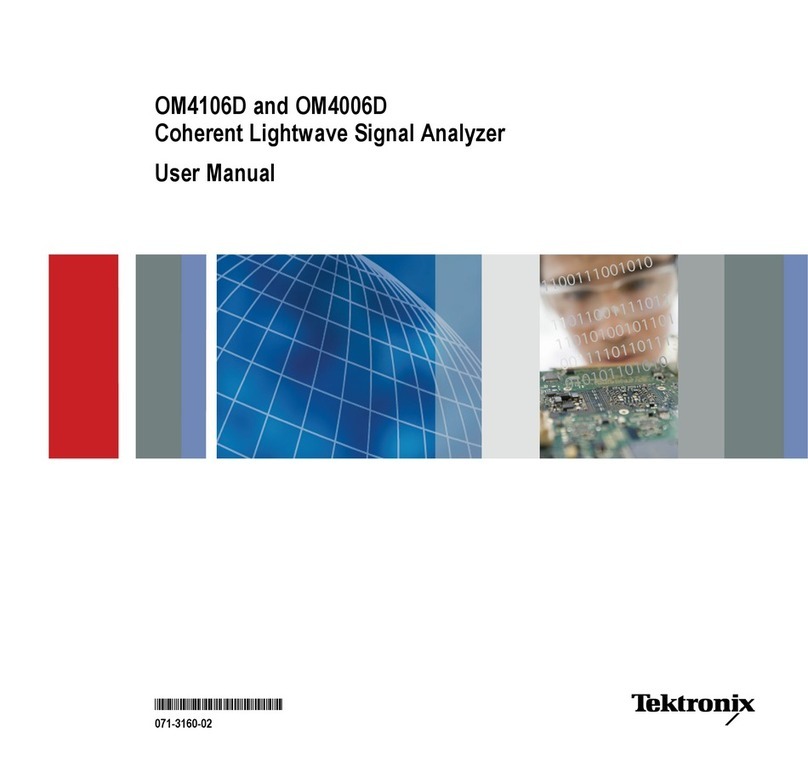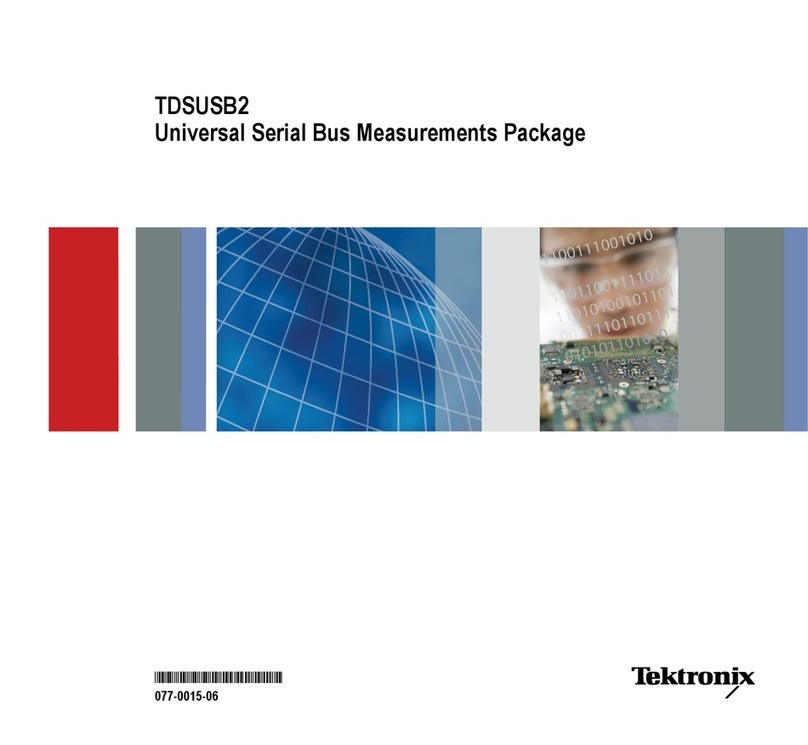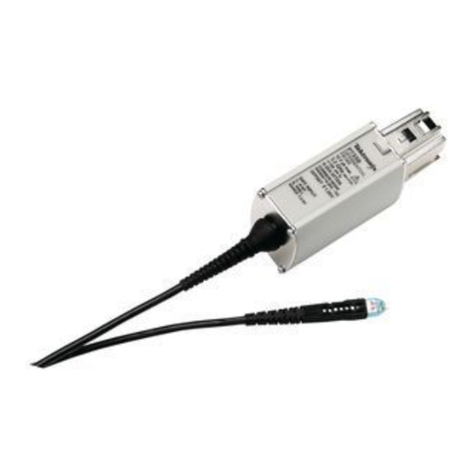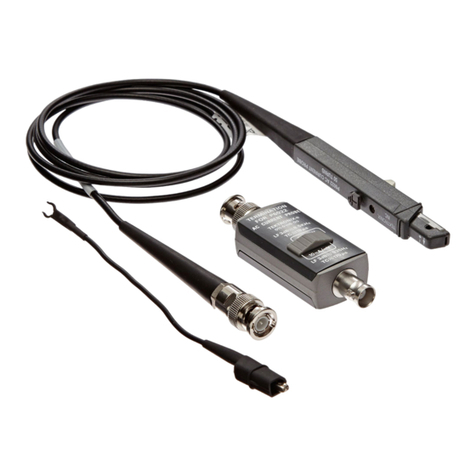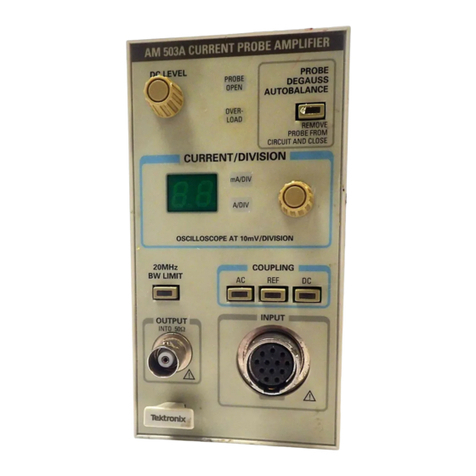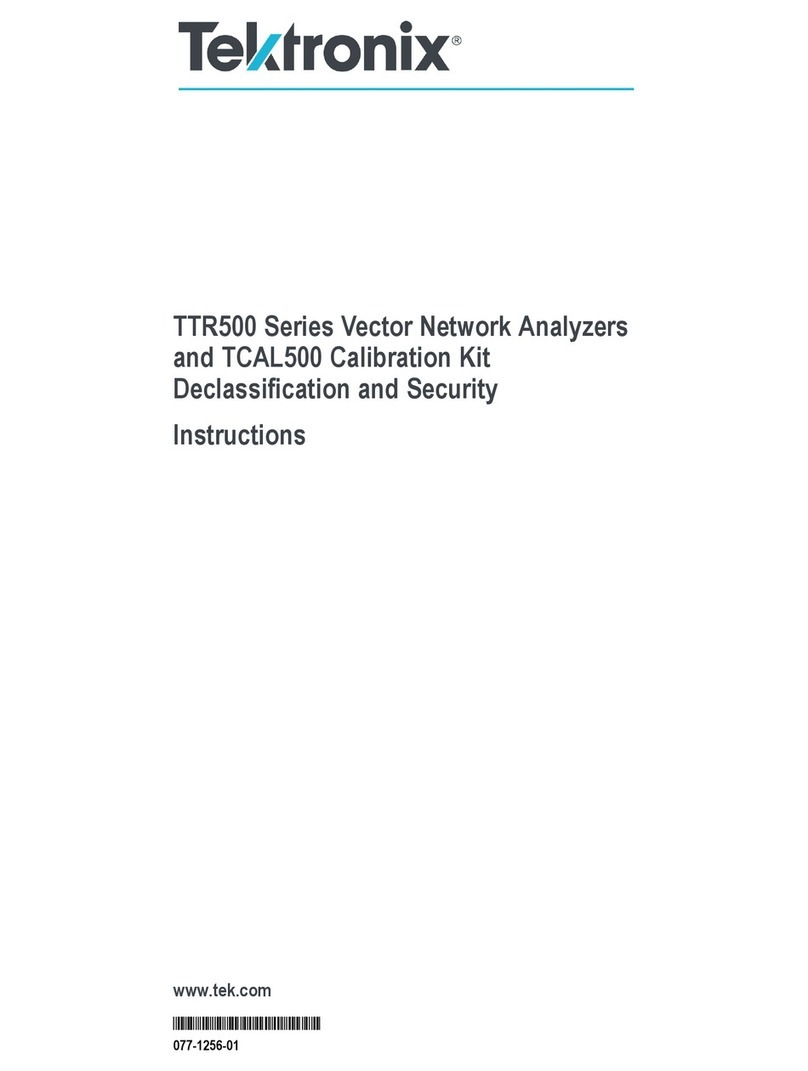
Maintenance-1340
SN
B040000-up
Resistor
Color Code.
In
addition
to
the
composition
resistors, some metal-film resistors-are used
in
this instru-
ment. Nearly all resistors are color-coded for resistance
value and tolerance using EIA color code
(a
metal-film
resistor may have
the
value printed
on
the
body). Composi-
tion resistors have four stripes which represent
two
signifi-
cant
figures,
the
multiplier and the tolerance value. Metal-
film resistors have five stripes which represent three
significant figures,
the
multiplier and the tolerance value.
Capacitor Marking. The capacitance
of
a disc or elec-
trolytic capacitor
is
marked
in
microfarads on
the
side of
the
component
body. The white ceramic capacitors used
in
this instrument are color-coded
in
picofarads using a
modified EIA code.
Diode Color Code. The cathode end
of
each glass-
encased diode
is
indicated by a stripe, a series
of
stripes, or
a
dot.
For most striped diodes, the color code indentified
the
unique portion
of
the
TE
KT
RON
IX
Part Number using
the EIA color-code system (e.g., a diode color-coded pink-,
blue-,
or
brown-gray-green indicates TE
KT
RON
IX
Part
Number 152-0185-00).
Semiconductor
Lead
Configuration. Fig.
3-1
shows the
lead configurations
of
semiconductors used
in
the
1340.
Troubleshooting Techniques
The following steps are intended as aids
in
locating a
defective component. If a defective
component
is
located,
refer
to
the
replacement procedures given under Corrective
Maintenance.
1.
Check
Control
Settings.
Incorrect control settings can
be misleading.
2.
Check
Associated
Equipment. Ensure
that
associated
equipment used with
the
1340
is
operating correctly. Check
for improper signal connections and flaws
in
intercon-
necting cables.
3.
Check
the Power Source.
4. Visual Check. Inspect
the
trouble area. Possible
troubles include unsoldered connections, broken wires,
damaged circuit boards, damaged components, etc.
5. Isolate Trouble to a Circuit. The symptom often
identifies
the
circuit
in
which
the
trouble
is
located. When
trouble symptoms appear
in
more than one circuit, check
affected circuits
by
taking voltage and waveform readings.
3-2
6.
Check
Voltages
and
Waveforms. The defective com-
ponent
can often be located by checking for the correct
voltage or waveform
in
the
circuit.
7.
Check
Individual Components. The following pro-
cedures describe methods of checking components. Com-
ponents which are soldered
in
place should first be isolated
by disconnecting one end.
A.
SEMICONDUCTORS
CAUTION
Turn
the power
off
before removing or replacing
semiconductors.
To check a transistor, substitute another which
is
known
to
be good. If substitute transistors are
not
available, use a
dynamic tester. Static-type testers are
not
recommended.
8.
DIODES
A diode can be checked for an open
or
shorted
condition by measuring
the
resistance between terminals.
Using an
ohmmeter
having an internal source of between
800
millivolts and 3 volts,
the
diode resistance should be
very high
in
one
direction and very
low
when the meter
leads are reversed.
CAUTION
Do
not
use
an
ohmmeter scale that would supply a
relatively
large
current to the diode. Avoid the lower
ranges, such
as
RX1
and RXTO.
C.
RESISTORS
Check
the
resistors with an ohmmeter. See the Electrical
Parts List for
the
tolerance
of
the
resistors used
in
this
instrument. Resistors normally
do
not
need
to
be replaced
unless
the
measured value varies widely from the specified
value.
D.
CAPACITORS
Use an
ohmmeter
(high resistance scale)
to
check a
capacitor for leakage
or
short-circuit.
Do
not
exceed
the
voltage rating of
the
capacitor. The resistance reading
should be high after initial charge of the capacitor. An open
capacitor can best be detected with a capacitance meter or
by checking whether the capacitor passes
AC
signals.
8. Repair
and
Readjust the Circuit. If any defective
parts are located, follow
the
replacement procedures given
in
this section.
Be
sure
to
check
the
performance
of
any
circuit
that
has been repaired.

